The Power of Youth Arts:


What the research tells us about the benefits of performing arts participation for children and young people
December 2022




December 2022

‣ As human beings we are drawn to arts and culture for entertainment, fun, and vibrancy in our lives.
‣ But there is growing body of evidence indicating that arts have powerful health, social and educational benefits – for individuals, communities and our society as a whole.
‣ The research shows there are important applications across our lifespans: with a role to play in everything from early childhood education, to aged care, to intergenerational bonding.
‣ For young people in particular, arts appear to have a special power. However, insights from research are not well known – even among those involved in it on a daily basis.
‣ The Australian Theatre for Young People (ATYP) and Patternmakers identified an opportunity for this evidence to be consolidated and shared – and this publication is the result.
‣ This document is designed to highlight some of the striking insights that have been gathered through quality research and real life examples of the insights in practice.
‣ For decades, researchers in Australia and around the world have completed detailed and rigorous work exploring and quantifying the benefits of arts participation.
‣ However, the insights are often located within academic journals, conference papers and government websites. We don’t always have the time, resources, or prior knowledge to find it, access it, or understand it.
‣ The same applies to the many examples of impact being generated by arts organisations and youth companies making work by, with, and for children and young people. Some of the most exciting stories are not heard by the people that search for them.
‣ The purpose of this guide is to help you navigate your way around different studies and sources, so you can find what’s relevant to you whether you’re a policy maker, stakeholder, arts manager, practitioner, or parent.
‣ We hope this guide will be used as a point of connection with the literature. It is not intended to be exhaustive, but rather to highlight what stands out from some of the highest quality, most relevant studies.
‣ We hope you will follow the links, read the studies, examine their strengths and limitations, and understand how they relate to you and your work.
‣ Ultimately, we want to shine a light on the robust evidence for youth participation in arts – with the hope that young people across Australia will benefit as a result.
In-depth investigations of a single individual, group or event, existing either as individual stories or a series – e.g., Sydney Theatre Company’s School Drama Research.
Evaluations of youth arts programs undertaken by consultants, research agencies and universities –e.g., Patternmakers’ Impact Evaluation of ATYP Programs.
Studies that observe changes in a single population, without random assignment or controls – e.g., Martin et al.’s longitudinal study of the Role of Arts Participation.
Studies with a control group and random assignment of participants – e.g., Bowen et al.’s study of Houston’s Art Access Initiative.
Broad, narrative overviews of the research on a particular topic –e.g., Robyn Ewing’s The Arts and Australian Education.
Non-statistical summaries of all research that meets a predescribed search criteria e.g., VicHealth’s Rapid Review Evidence Check exploring the role of arts in health promotion.
Statistical and numerical summaries of multiple methodologicallysimilar studies e.g. Karkou et al.’s analysis of the effectiveness of Dance Movement Therapy.
1. Youth arts provides a platform for young people to explore important ideas - and boosts civic engagement.
2. Arts participation provides socio-emotional benefits for young people that can act as protective factors against mental illness.
3. Arts can be used therapeutically or ‘on prescription’ to fight depression, anxiety, and PTSD in young people.
4. Arts participation is associated with better educational outcomes for students, including stronger academic performance.
5. Arts-rich education improves students’ motivation, engagement, attendance, and school enjoyment.
Things we know about young people and arts, supported by the literature:
Young people care strongly about challenges facing our world, but often feel like they don’t have a voice. Research from Australia and the USA shows that arts provide ways for them to explore big topics – and gets them inspired to vote or volunteer.

Youth arts provides a platform for young people to explore important ideas - and boosts civic engagement.
Young people are knowledgeable and passionate about the issues affecting our country and globe. A 2021 Mission Australia survey of more than 20,000 young people found that the issues they consider the most important are the pandemic (45.7%), climate change (38%), and equity and discrimination (35.4%).
Young people are also likely to feel disempowered and voiceless – for example, only 13% of 1,500 Australians aged 10 to 24 say they feel leaders in government hear their concerns around climate change, according to the 2020 Our World Our Say Youth Survey Report. Youth arts can offer young people a platform to explore issues that matter to them.
Youth arts can help young people take pride in their identities and celebrate diversity and inclusion. Programs like Bangarra’s Rekindling and Koorie Heritage Trust’s Blaktraks have shown that providing creative opportunities for First Nations young people promotes cultural maintenance, intergenerational connections, self-esteem, and wellbeing.
It can also be a gateway to other forms of civic engagement. A 12 year longitudinal study of 12,000 American students found that young people who participated in arts were more likely to be involved in political participation and volunteering.
Young people from socioeconomically disadvantaged backgrounds who participate in youth arts were also more likely to participate in student government, volunteer, and vote in local and national elections - according to a correlational analysis of four national longitudinal datasets in the US.
Young people are experiencing a range of mental health stressors right now. Read on for the research on how arts participation can equip them with tools for mental wellbeing.

provides
for young people that can act as protective
against mental illness.
Systematic reviews of the literature show that arts participation builds resilience and contributes to confidence, self-esteem, selfexpression, happiness, mindfulness, improved coping mechanisms, and higher life satisfaction.
Around half of serious mental health issues in adulthood begin before the age of 14, and the socio emotional benefits of arts participation are known protective factors against mental illnesses like anxiety and depression.
An Australian systematic review of 56 studies found evidence that performing arts programs and interventions support mental wellbeing and social health.
A study by Cirkidz and Uni SA of 54 young people found that participating in circus improved stress levels, self esteem, confidence, and socialisation – and calculated that for every $1 invested in youth performing arts, $7 could be generated in social return.
A 2017 literature review by the ANU Centre for Aboriginal Economic Policy Research found that amongst Aboriginal and Torres Strait Islander people, arts and cultural expression was associated with higher levels of subjective wellbeing.
people that can act as protective factors against mental illness.
pandemic

Arts can be used therapeutically or ‘on prescription’ to fight depression, anxiety, and PTSD in young people.
The
has exacerbated a mental health crisis amongst young people. Read on to find out what the literature says on using arts ‘on prescription’.
The hippocampus is the part of the brain responsible for learning and memory. Depression causes it to shrink in size. Exercise has been shown to act in the same way as antidepressants – as a neurogenic stimulus which forms new neurons in the hippocampus and is included in guidelines for depression treatment. There’s evidence that arts can also be used ‘on prescription’ for young people.
For example, a randomised control trial of 109 people with depression in Finland found that Dance Movement Therapy reduced depression symptoms (and other indicators of physical and psychological of distress) to a greater extent than the participants’ usual psychological and medical treatment.
A systematic review with meta-analyses of 8 studies similarly concluded that Dance Movement Therapy is an effective treatment for depression. They cited research showing that dance actively engages every part of the brain – while also providing the therapeutic benefits of exercise.
Studies also suggest that drama therapy can be used to overcome distress. A study of 5 young people in Portugal found that the therapeutic use of masks could be used to combat anxiety. In Italy, a performing arts intervention was used to help 89 adolescents address death avoidance and grief around the death of two classmates.
Furthermore, a literature review suggests that playing or listening to music also has the ability to help people suffering from PTSD by decreasing amygdala activity, improving hippocampal and prefrontal brain function, and balancing the HPA-axis.
or ‘on prescription’ to fight depression, anxiety and PTSD in young people.
Arts can help young people perform better at school. Read on for the evidence.
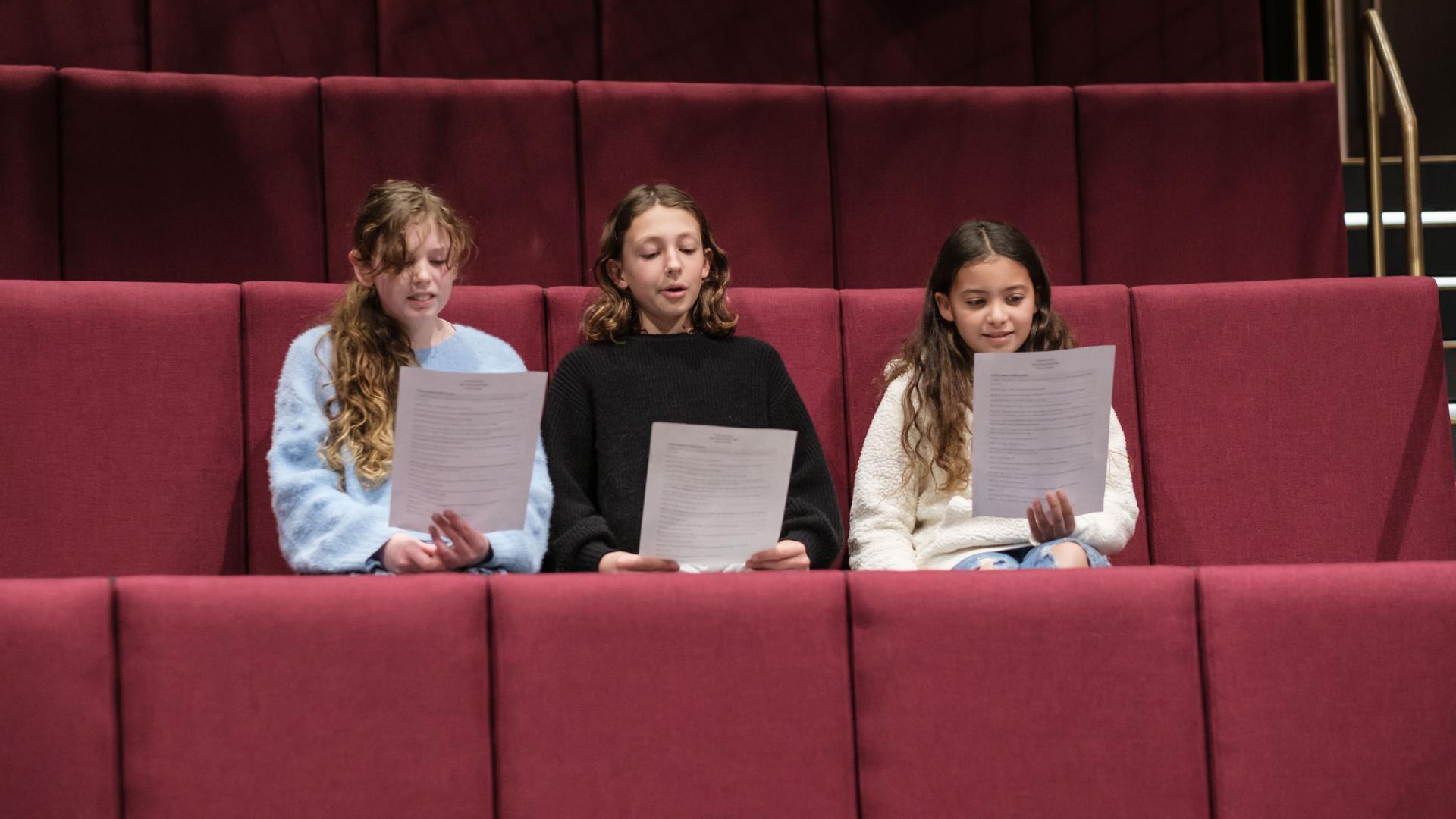
participation is associated with better educational outcomes for students, including stronger academic performance.
Since the 90s, there’s been a strong international evidence base to suggest that arts participation is associated with higher academic performance including literacy, numeracy, and higher-order problem-solving skills.
In America, a 2019 randomised control trial of 10,548 students showed that increasing arts educational experiences improved performance on a standardised writing test (involving an essay task and multiple choice questions) by 0.13 standard deviations–suggesting that arts participation promotes critical thinking.
An Australian longitudinal study of over 600 students showed that arts engagement significantly predicted class participation, educational resilience (the ability to deal with academic setbacks and adversity), and educational aspirations (e.g. intention to finish school).
A 12-year longitudinal study of 12,000 American students found advantages for arts engaged low-SES students in terms of tertiary education attendance, grades, and types of employmentsuggesting that youth arts participation can promote equity.
An evaluation of the Creative Arts Indigenous Parental Engagement program, involving 155 Indigenous students, found that the program ‘closed the gap’ between Indigenous and non-Indigenous students’ NAPLAN scores by more than 20% in reading and 17% in writing.
Teaching young people to love learning will set them up for strong futures. Read on to hear how arts-rich learning is associated with more engaged and motivated students.

A review of the Australian and international literature suggests that, in addition to academic performance, artsrich education can improve behavioural indicators like engagement, motivation, attendance, drop out rates, and peer relationships.
An Australian longitudinal study of over 600 students showed that arts engagement in school and at home positively predicted higher levels of motivation, self-esteem, life satisfaction, and sense of meaning and purpose.
An American 2019 randomised control trial of 10,548 students showed that students who received arts educational experiences were 3.6% less likely to receive disciplinary infractions and be more compassionate towards others (by 0.08 standard deviations).
The same study found that for elementary children in particular, receiving an artseducation intervention increased school engagement, intention to attend higher education, and arts facilitated empathy.
Arts-rich education can also improve school engagement for First Nations students. An evaluation of the Creative Arts Indigenous Parental Engagement program in Queensland schools found that the program increased the proportion of Indigenous students with zero days absent by 8.1% (remote students) and 5.7% (metropolitan students).
1. Frances Rings & Sidney Saltner are drawing upon their formative experiences in arts to help First Nations young people preserve their languages and culture
of the power of arts for children and young people in Australia.
2. Jopuka Productions is sharing the voices of young people with local government and the community on the Central Coast
3. Recreational participation in youth circus gave Jascha Boyce the skills and confidence to form a world-renowned acrobatics company
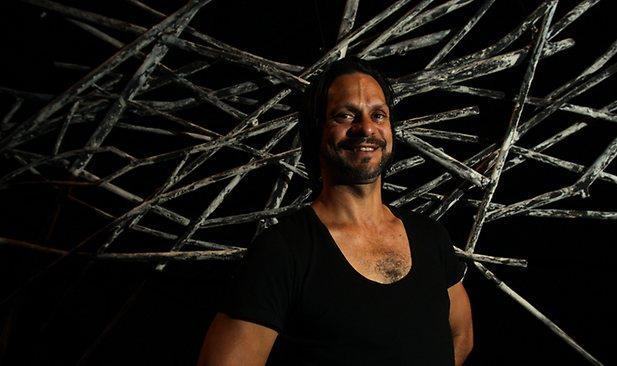
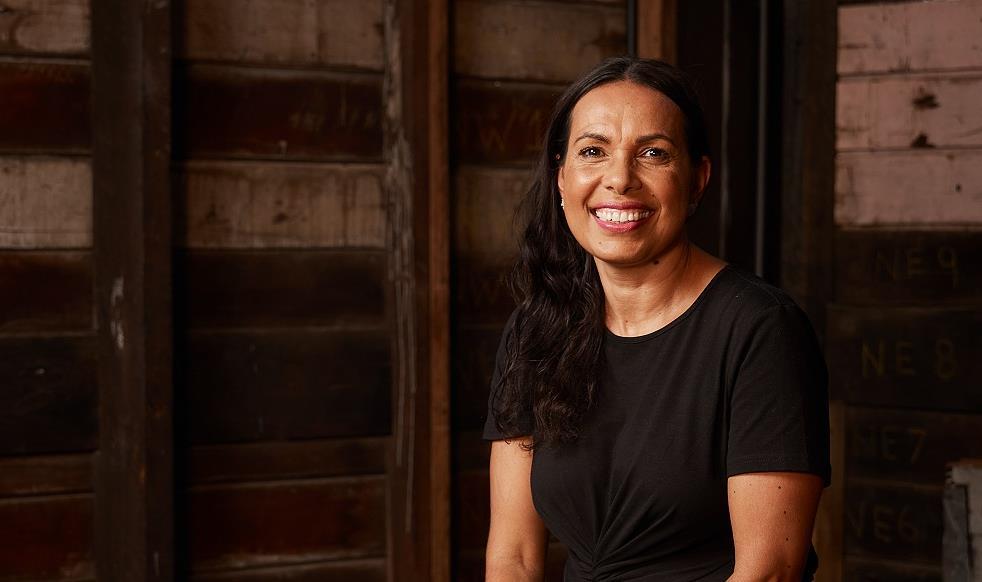
Frances Rings & Sidney Saltner are drawing upon their formative experiences in arts to help First Nations young people preserve their languages and culture.
‘We invest in these kids now, we know the future is solid.’
‣ As young people coming to Sydney’s NAISDA Dance College, Frances and Sidney were empowered to embrace their identities as First Nations people, tell their own stories, and develop their practices as dancers. Now, they’ve offered the same opportunity to 1,000 First Nations young people through Rekindling, Bangarra’s 3year community residency program.
‣ By tasking young people with connecting with their Elders and understanding their history, they’re helping preserve cultural practices and languages that might otherwise be lost – as well as producing the next generation of Bangarra performers, like Rekindling alumni Amberlilly Gordon and Mitchell J Nalingu Harrison-Currie.
‣ For young people who often ‘walk in two worlds,’ Rekindling is playing a vital role in preserving languages and culture, and helping young people take pride in their identity.
‣ Frances Rings is the Artistic Director of Bangarra Dance Theatre, one of the country’s leading performing arts companies, and a descendant of the Kokatha Tribe from the West Coast of South Australia. Sidney Saltner is Bangarra’s Youth Program Director and a descendent of the Wulli Wulli and Wakka Wakka people of Central Queensland.
‣ Both Frances and Sidney were trained at NAISDA Dance College, a Sydney based performing arts training college for Aboriginal and Torres Strait Islander performers. They describe NAISDA as an enormously influential environment for developing their practices, and as Frances says, ‘embracing your identity and telling your story, owning your distinctiveness as an Indigenous person.’
‣ Sidney describes growing up in Central Queensland in ‘the white mainstream’ to parents and grandparents who were forbidden from speaking their traditional languages.
‣ He says that when returning home from NAISDA, he was able to encourage his family to speak openly about their experiences and history.
‣ As Sidney notes, the effects of forced assimilation mean that the transmission of Indigenous cultural knowledges and practices from generation to generation has often been interrupted and some are in danger of being lost. For example, of the 250 known Indigenous languages, only about 145 are still spoken, and 110 are critically endangered.
‣ The result of this is that ‘most Aboriginal kids are walking in two worlds. English is their second language. In many remote communities, they’re still not allowed to speak their language at school.’ Connection to culture, land and language are known to be protective factors for the health and wellbeing of First Nations people – and the maintenance of these traditions and practices is vitally important.
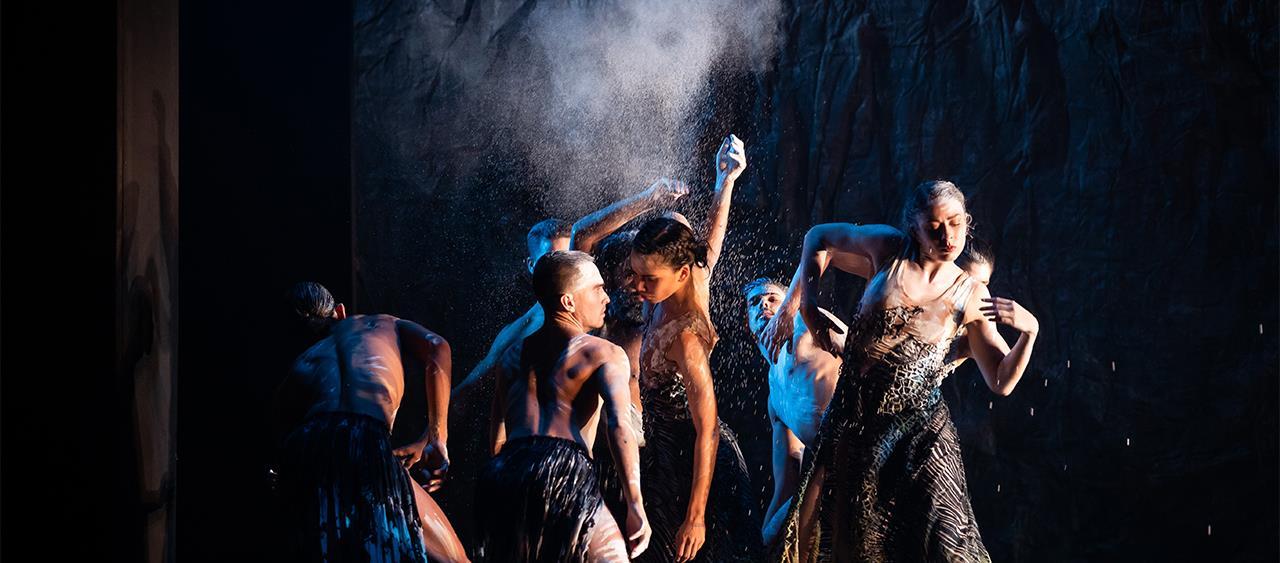
‘If we want to create positive change – want our society to be healthy, diverse, and inclusive, proud of our Indigenous cultures –then we need to be empowering young people.’Frances Rings
‣ Now, Frances and Sidney are delivering performing arts opportunities to another generation of young First Nations people. Rekindling is a youth program delivered by Bangarra for secondary students. Each iteration of the program is a three-year residency in an Aboriginal and Torres Strait Islander community, where Sidney and his team connect with young people, Elders, teachers, and other members of the community. Young participants are tasked with researching their community, receiving stories from Elders, verbalising and documenting their findings - and, ultimately choreographing, creating, and putting on a performance.
‣ Rekindling aims to create a space for intergenerational bonding and sharing-stories –empowering communities by giving them control over the story-telling process. Frances says, ‘Sidney and the team can give them the tools and facilitate, but the community have to own it. Every community is different in terms of the stories they want to share.’
‣ Across Australia, Rekindling is playing a vital role in cultural maintenance and preservation –allowing 1,000 young people in 44 communities to take part in story-sharing, connect with Elders, reclaim language and experience Country. Sidney says, ‘it’s really important and empowering for these young ones to understand that they are walking in two worlds. They struggle with that, but when they see people like Bangarra who have been through this, they understand – they look to us and ask, ‘how do you do this, how do you cope?’
‣ Sidney notes that participation often has educational benefits for the young people involved – introducing both students and teachers to new modes of learning that they can adapt to the school context. He notes that so-called ‘problem kids’ are often the ones who get the most out of the program – ‘the ones that keep coming back.’
‣ This is consistent with research by ANU’s Aboriginal Economic Policy Research Centre, which has shown that arts participation positively predicts subjective educational outcomes for First Nations students.
‣ Rekindling has also been the genesis of successful dance careers with current Bangarra company dancers like Amberlilly Gordon and Mitchell J Nalingu Harrison-Currie beginning their careers as participants. However, Frances says, ‘it’s not even really about career pathways. It’s about feeling confident to be in your own space, to own your identity, to feel part of your community, to own your stories. You can be a young Blackfella in a remote area and share stories - tell them in your own language, your own way. Already, that’s going into future - that’s inspiring others. Many people have probably never seen a young person stand up and do that before.’
Jopuka Productions is sharing the voices of young people with local government and the community on the Central Coast.
‘It’s now a completely different environment to the one I grew up in. Young people go from where I was, where there was nothing… to now realising there is so much they can do.’ – Joshua Maxwell

‣ When Joshua Maxwell was growing up on the Central Coast, opportunities for creative kids were perceived as limited compared to the city. Now, Joshua is the founder of Jopuka – one of the Central Coast’s leading independent Youth Performing Arts companies.
‣ Joshua is using the trust they’ve built with young people in the Central Coast to give voice to their perspectives including by connecting them with local government and helping them explore major issues in a creative context.
‣ For example, the Central Coast is disproportionately affected by social issues like teen pregnancy, unemployment, and domestic violence. With young people empowered to direct their own shows, Jopuka is providing a safe environment to explore topics like pregnancy, toxic masculinity and class inequality.
‣ Joshua Maxwell is a theatre-maker, activist, and writer working on Darkinjung Land on NSW’s Central Coast. Growing up in an ‘artsy family,’ they began drama classes at a young age – always ‘the kid putting on shows in the living room.’ When they moved to the Central Coast in primary school, Joshua says the ‘region didn’t have a constant source of youth arts. My artistic sphere was amateur theatre or go NIDA. I thought I’d become a set designer.’
‣ In addition to relatively limited career and creative opportunities, the Central Coast sees higher rates of social problems which disproportionately affect the regions. For example, as of 2016, the teen pregnancy rate in the Central Coast was consistently higher than the national average. The Central Coast Council also cites high unemployment rates and low education as a feature of its labour force, and notes in March 2019, it had the second highest number of Domestic Violence AVOs in all of NSW.
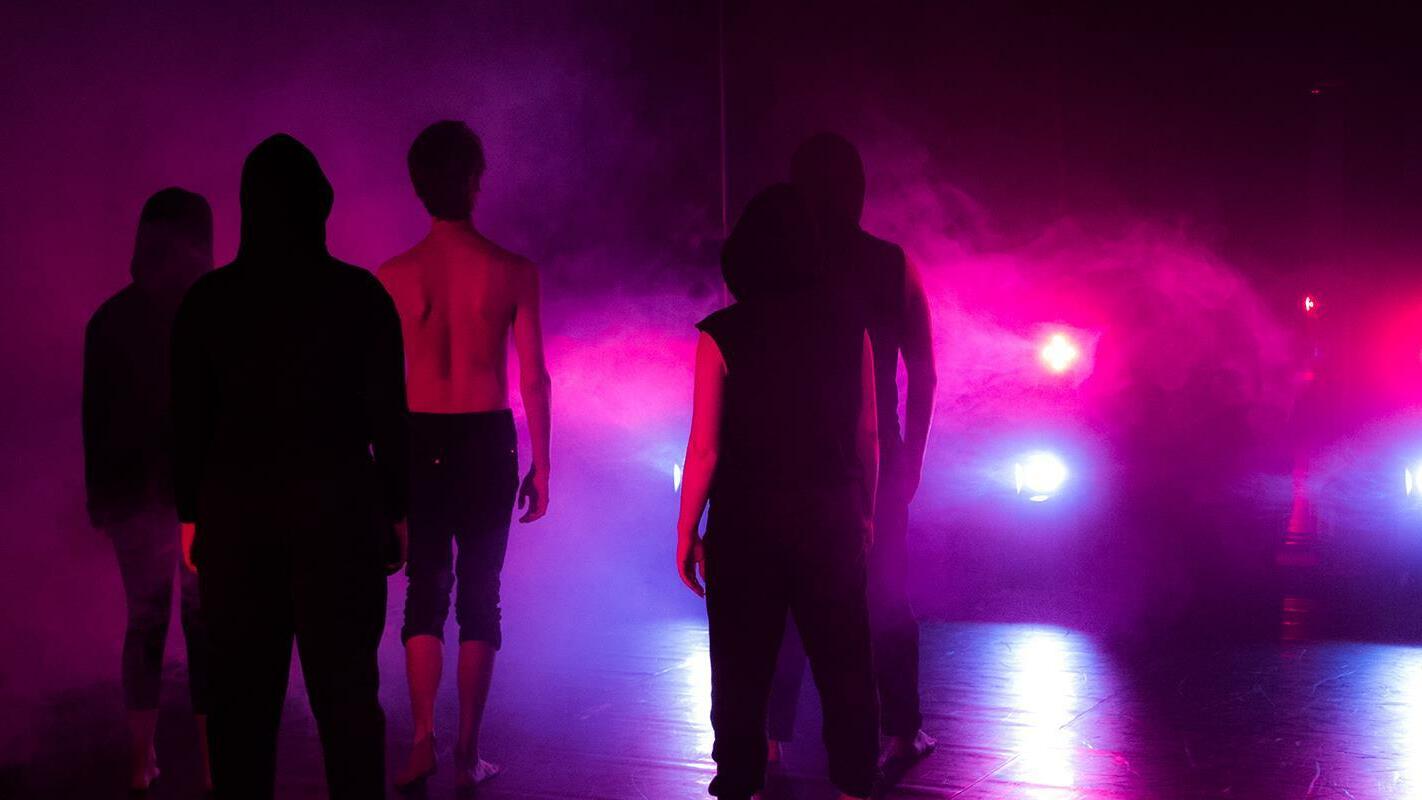
‘We always wanted somewhere where young people could come, work with their friends and make mistakes.
Young people are taking away ownership and agency over what they’re doing. There’s a lot of resilience and empowerment that comes out of it.’Joshua Maxwell
‣ At age 22, Joshua founded Jopuka Productions –an independent youth performing arts company that provides training and development to young people aged 12-26.
‣ Jopuka uses a peer driven model, with most Jopuka directors aged 25 and under. Joshua says, ‘the peer driven approach is about acknowledging that young people don’t want to just perform, they want to create. If a young person wants to put on a two hander, we say, absolutely, go and find a show – we’ll fund it and host it.’
‣ Since launching, Jopuka has staged 30 productions and delivered arts opportunities to over 1,200 young people. Joshua says Jopuka has ‘fostered a new culture’ of youth theatre on the Central Coast, encouraging other companies to expand their offerings for young people. ‘It’s a completely different environment to the one I grew up in. Young people go from where I was, where there was nothing to do, to now realising there is so much they can do.’
‣ Joshua’s role at Jopuka allows the company to act as an amplifier for young people’s voices. They played a major role in the formation of the Central Coast Council’s Cultural Plan, proposing a forum with young people and connecting local government with 50 people involved with youth arts for consultation.
‣ Jopuka’s shows also give young people the opportunity to speak directly to their community about important issues. Joshua says, ‘one thing we do is survey our young people every year. We ask them 30 questions: what topics do you want to share on stage, what topics are irrelevant, what shows/musicals would you like us to do. We also have Rocket Fuel, a 3-year project where we interview hundreds of young people. We’re going to give that data to 7 theatre makers.’
‣ Joshua says, ‘This year we had teen pregnancy crop up - a really big issue on the coast. [Also] toxic masculinity, sexual identity. Then with Brown Paper Bag Canteen by Alexander Lee-Rekers, it’s all about food and class inequality.’
‣ Furthermore, Jopuka has offered a platform and community for Queer youth in the Central Coast –with Joshua saying they’ve seen a radical shift in attitudes towards sexual diversity in the regions over their lifetime. ‘When I was growing up, the concept of being Queer in theatre was a stereotype, something to be bullied about. Now 37 Jopuka students are marching in Mardi Gras and having the absolute time of their lives. Right now we’re doing a production of American Idiot, and our ‘Johnny’ is a trans man.’
‣ Jopuka is also generating viable careers in performing arts – with 30 to 35 past Jopuka members currently employed professionally in Sydney, Newcastle, and Melbourne. Joshua says, ‘they’re going into writing, directing, working at KXT and Griffin – one is about to be in A Clockwork Orange.’
Boyce the skills and confidence to form a worldrenowned acrobatics company.
‘Circus helped me to understand from a very young age that there’s something that everyone is good at. It’s a very accepting environment – challenging in a non-competitive way.’

‣ The evidence tells us that youth performing arts participation can promote life satisfaction, selfesteem, confidence, peer relationships, and aspiration – and in Jascha Boyce’s case, it led her to create a world-renowned acrobatics company with some of her best friends.
‣ Jascha Boyce started circus as a 4 year old. Now, she is a co founder and company performer for Gravity and Other Myths (GOM), an acrobatics and physical theatre company founded in Adelaide in 2009.
‣ Jascha says that when she was creating GOM, she didn’t have many local models for the kind of company she wanted to establish – but now GOM is acting as a source of inspiration for young performers.
‣ Jascha started circus, aged 4, at Cirkidz Circus School, saying, ‘I started when I was four. It was just the recreational activity I chose, rather than ballet or soccer.’ She describes the circus context as a highly positive environment to grow up in, connecting her with older role models and celebrating diversity and difference.
‣ She says, ‘it helped me to understand from a very young age that there’s something that everyone is good at. It’s a very accepting environment challenging in a non-competitive way. There are techniques, but my favourite coaches were the ones who gave you tips and then let you discover what works for you. There’s more of an emphasis on creativity, expression, and experimentation.’
‣ Jascha describes the Australian circus scene as vibrant and close-knit, saying that the country’s network of circus and youth circus festivals offered her vital opportunities while she was developing her career. However, she notes that the market is smaller than it is in Europe, and that it would be ‘incredibly difficult’ to be solely based in Australia, without the income generated by international touring.
‣ When starting her company, Jascha notes she didn’t have a local model for the kind of ‘small to medium circus company’ she was trying to create – looking overseas, to Montreal-based company The 7 Fingers for inspiration.
‘We thought Edinburgh would be our last hurrah. Some of our company members were finishing their degrees, and we thought we’d just go overseas as a finale tour.
In our final week, we met our agent. From then onwards, we toured for 10 or 11 months every year.’
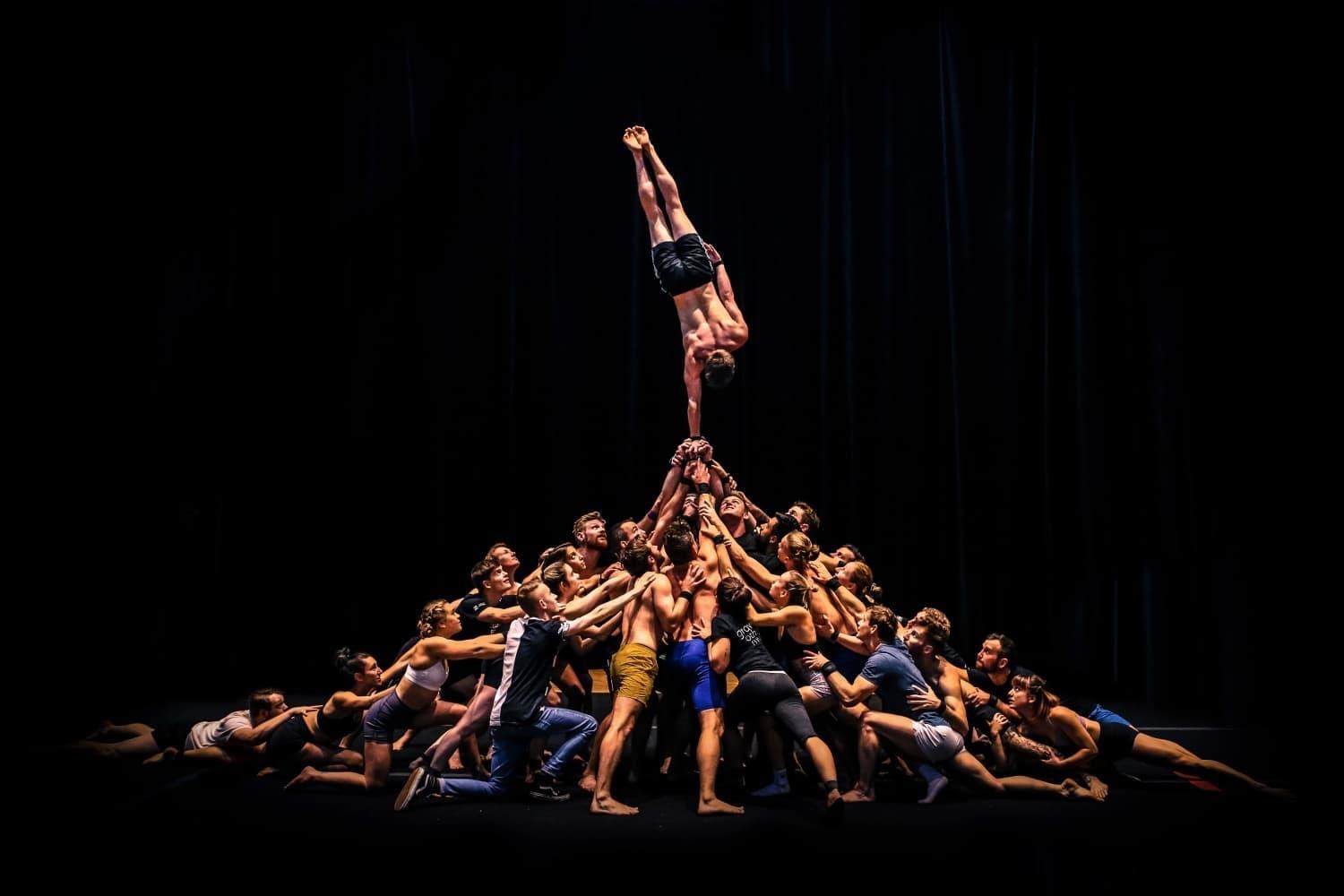
‣ After graduating high school, Jascha and her fellow Cirkidz alumni were eager to keep training together. They created GOM while they were in university, as ‘a focus for their training.’ About creating a company with the co-performers she’s known since she was 10, Jascha says, ‘the balance between studying and starting the company was quite easy because we loved training together so much. We’d always find time to get into a training space together.’
‣ While their company was in its infancy, Jascha and her co founders were convinced at the last moment to attend Edinburgh Fringe Festival, viewing it as a ‘last hurrah’ before moving on from circus. There, they met their agent and launched their international careers.
‣ Since its founding, GOM has grown from its 5 original members to a 40 person company. Their latest show, The Pulse, had 30 people on stagethe biggest cast in GOM’s history.
‣ GOM has achieved international acclaim, touring its company around the world. Its first work, A Simple Space, was performed 950 times across 34 countries. The company has received multiple awards, including the IPAY Victor People’s Choice Award, a Helpmann Award for Physical Theatre, and three awards at the International Circus Awards.
‣ For aspiring local performers, GOM is demonstrating that Australian outputs can compete on the world stage. Jascha says, ‘Recently, we met with a group of NICA students during Fringe for a Q&A, and something we took away was most of their questions were around how to get into GOM or make their own companies. It was really humbling and exciting to be that company that people look up to.’
‣ The quality of research is important. First and foremost, we encourage you to read the studies cited here for yourself, and to think critically about what the research is and isn’t saying.
‣ Assessing quality of research is complex and can include things like the use of qualitative/ quantitative research methods, the sample size, the presence/absence of controls, who undertook it, who funded it, where it was published, and whether it has been peer-reviewed.
‣ Talking about things like creativity, self worth and cultural value often lends itself to qualitative rather than quantitative outcomes, and because of the way youth arts programs work and have been researched, there are often smaller sample sizes and no controls.
‣ Relevance is also really important and there are considerations like how recent the research is, the location where it was undertaken, the specific artform or type of arts engagement that was studied, and the age of the children or young people.
‣ The extent to which these findings are generalisable also depends on the quality of the arts initiatives themselves. It may be that the highest quality programs are the ones chosen for study, and similar programs that are not as wellresourced or designed may not accomplish the same results.
‣ Not all arts experiences are created equal, and it’s important that young people are exposed to arts opportunities that are thoughtfully-designed, adequately-resourced and ultimately high-quality.
‣ Just because a study has a small sample size, or doesn’t have a control group, doesn’t mean it isn’t useful, interesting or relevant. However, we need to be conscious of the methodologies and signpost the best quality and most relevant research.
‣ Knowing the limitations and gaps is important because we can also then identify opportunities for more, better quality, or larger research studies.
‣ In this guide, we wanted to amplify messages from the literature making them clear and easy to understand, without glossing over limitations or misrepresenting the evidence.
‣ Whether you are using this resource for your own advocacy work, or simply getting to know the evidence better, we encourage you to do the same!
‣ Slide 1 - Image Credit: Brett Boardman, courtesy of ATYP
‣ Slide 5 Image Credit: Tracey Schramm, courtesy of ATYP
‣ Slide 7 - Image Credit: Tracey Schramm, courtesy of ATYP
‣ Slide 9 Image Credit: Tracey Schramm, courtesy of ATYP
‣ Slide 11 - Image Credit: Brett Boardman, courtesy of ATYP
‣ Slide 13 Image Credit: Clare Hawley, courtesy of ATYP
‣ Slide 16 - Frances Rings. Image Source: https://dancemagazine.com.au/2021/12/francesrings-named-new-artistic-director-of-bangarra/.
By Daniel Boud. & Sidney Saltner. Image Source: https://www.couriermail.com.au/ipad/bangarrafinale-pointes-to-new-dances/newsstory/389e107cd2edf56fb09bf1936a02599f
‣ Slide 18 Rekindling. Image Source: https://www.bangarra.com.au/community/rekindl ing youth program/
‣
Slide 20 - Joshua Maxwell. Image Source: https://www.linkedin.com/in/joshua-maxwell963154202/?originalSubdomain=au
‣ Slide 22 – Brutal by Jopuka Productions. Image Source: https://www.jopuka.org.au/portfolio/brutal/
‣ Slide 24 Jascha Boyce. Image Source: https://www.adelaidereview.com.au/arts/2019/05/ 14/south australian artists interstate/
‣
Slide 26 - Gravity and Other Myths performs ‘Macro’. Image Source: https://www.gravityandothermyths.com/
ia. Sydney Theatre Company. School Drama Research. Retrieved from: https://www.sydneytheatre.com.au/education/teacher learning/the research
ib. Patternmakers (2016) Youth Theatre & Wellbeing: An Impact Evaluation for Australian Theatre for Young People. Retrieved from: https://www.thepatternmakers.com.au/youth theatre mental health
ic. Martin, A. J., Mansour, M., Anderson, M., Gibson, R., Liem, G. A., & Sudmalis D. (2013). The role of arts participation in students’ academic and nonacademic outcomes: A longitudinal study of school, home, and community factors. Journal of Educational psychology 105(3), 709. Retrieved from: https://www.researchgate.net/publication/258100829_The_Role_of_Arts_Participation_in_ Students'_Academic_and_Nonacademic_Outcomes_A_Longitudinal_Study_of_School_Hom e_and_Community_Factors
id. Bowen, D. H., & Kisida, B. (2019). Investigating Causal Effects of Arts Education Experiences: Experimental Evidence from Houston's Arts Access Initiative. Research Report for the Houston Independent School District. Volume 7, Issue 4. Houston Education Research Consortium. Retrieved from: https://files.eric.ed.gov/fulltext/ED598203.pdf
ie. Ewing, R. (2011). The Arts and Australian Education: Realising Potential. Australian Education Review; no. 58. Retrieved from: https://research.acer.edu.au/aer/11/
if. Davies C and Pescud M. The Arts and Creative Industries in Health Promotion: an Evidence Check Rapid Review brokered by the Sax Institute for The Victorian Health Promotion Foundation, Ultimo, New South Wales; 2020. Retrieved at: https://www.saxinstitute.org.au/wp content/uploads/20.12_Evidence Check_arts and health promotion.pdf
ig. Karkou, V., Sajnani, N., Orkibi, H., Groarke, J. M., Czamanski Cohen, J., Panero, M. E., ... & Baker, F. A. (2022). The Psychological and Physiological Benefits of the Arts. Frontiers in Psychology 286. Retrieved from: https://www.frontiersin.org/articles/10.3389/fpsyg.2022.840089/full?fbclid=IwAR3UdycZd pZM8mVA4mWk1FSl8JW6IX8UFwVlwGTrcNvp xvb5TdRXuBG8c0
1.1 Mission Australia (2021). Youth Survey: Report 2021. Retrieved at: https://www.missionaustralia.com.au/what we do/research impact policy advocacy/youth survey
1.2 Australian Institute for Disaster Resilience (2020). Our World Our Say: Youth Survey Report. Retrieved at: https://www.aidr.org.au/media/7946/ourworldoursay youth survey report 2020.pdf
1.3 Bangarra. “Rekindling Youth Program.” Retrieved at: https://www.bangarra.com.au/community/rekindling youth program/
VicHealth (2013) “Promoting Aboriginal Health Through the Arts: Overview of Supported Projects.” Retrieved at: https://www.vichealth.vic.gov.au/ /media/ResourceCentre/PublicationsandResources/arts/VH_Promoting Aboriginal health through arts V1.pdf?la=en&hash=1FF711CA90F45303E42D72D3E78AE645D943E491
1.4 Catterall, J. S. (2009). Doing well and doing good by doing art. Los Angeles, CA: Imagination Group. Retrieved at: https://www.academia.edu/37500323/Doing_Well_and_Doing_Good_by_Doing_Art_Catter all_James_S_Study
1.5 Catterall, J. S. (2012). The Arts and Achievement in At Risk Youth: Findings from Four Longitudinal Studies. Research Report# 55. National Endowment for the Arts. Retrieved at: https://files.eric.ed.gov/fulltext/ED530822.pdf
2.1 Davies C and Pescud M. The Arts and Creative Industries in Health Promotion: an Evidence Check Rapid Review brokered by the Sax Institute for The Victorian Health Promotion Foundation, Ultimo, New South Wales; 2020. Retrieved at: https://www.saxinstitute.org.au/wp content/uploads/20.12_Evidence Check_arts and health promotion.pdf
Bidwell S. (2014). The arts in health: Evidence from the international literature. Christchurch, New Zealand: Pegasus Health. Retrieved at: https://www.pegasus.health.nz/wp content/uploads/2018/05/Arts in Health Susan Bidwell.pdf
2.2 Beyond Blue. Mental Health Conditions in Children. Retrieved at: https://healthyfamilies.beyondblue.org.au/age 6 12/mental health conditions in children
Youth.gov. Risk and Protective Factors for Youth. Retrieved at: https://youth.gov/youth topics/youth mental health/risk and protective factors youth
2.3 Davies C and Pescud M. The Arts and Creative Industries in Health Promotion: an Evidence Check Rapid Review brokered by the Sax Institute for The Victorian Health Promotion Foundation, Ultimo, New South Wales; 2020. Retrieved at: https://www.saxinstitute.org.au/wp content/uploads/20.12_Evidence Check_arts and health promotion.pdf
2.4 McGarth R and Stevens K. (2017) Cirkidz Youth Circus Skills Training Social Return on Investment Report. Retrieved from: https://socialvalueuk.org/wp content/uploads/2017/09/Cirkidz SROI Report Final.pdf
2.5 Biddle, N., & Crawford, H. (2018). Indigenous participation in arts and cultural expression, and the relationship with wellbeing: results from the 2014 15 National Aboriginal and Torres Strait Islander Social Survey. Canberra, ACT: Centre for Aboriginal Economic Policy Research (CAEPR), The Australian National University Retrieved from: https://openresearch repository.anu.edu.au/bitstream/1885/147862/1/Working_Paper_117_2017_0.pdf
i.
3.1 Micheli, L., Ceccarelli, M., D’Andrea, G., & Tirone, F. (2018). Depression and adult neurogenesis: positive effects of the antidepressant fluoxetine and of physical exercise. Brain research bulletin, 143, 181 193. Retrieved from: https://www.sciencedirect.com/science/article/pii/S0361923018304507
Arts & Minds. (2017). Pilot Studies Report Arts on Prescription for Adolescents. Retrieved from: https://nnfestival assets.s3.eu west 1.amazonaws.com/wp content/uploads/2017/12/21104239/Arts Minds FINAL REPORT on Prescription for Young People.pdf
3.2 Hyvönen, K., Pylvänäinen, P., Muotka, J., & Lappalainen, R. (2020). The effects of dance movement therapy in the treatment of depression: a multicenter, randomized controlled trial in Finland. Frontiers in psychology, 11, 1687. Retrieved from: https://www.frontiersin.org/research topics/11877/the psychological and physiological benefits of the arts#articles
3.3 Karkou, V., Aithal, S., Zubala A., & Meekums, B. (2019). Effectiveness of dance movement therapy in the treatment of adults with depression: a systematic review with meta analyses. Frontiers in psychology, 936. Retrieved from: https://www.frontiersin.org/articles/10.3389/fpsyg.2019.00936/full?fbclid=IwAR2yi46Q1K W
3.4 Karkou, V., Sajnani, N., Orkibi, H., Groarke, J. M., Czamanski Cohen, J., Panero, M. E., ... & Baker, F. A. (2022). The Psychological and Physiological Benefits of the Arts. Frontiers in Psychology 286. Retrieved from: https://www.frontiersin.org/articles/10.3389/fpsyg.2022.840089/full?fbclid=IwAR3UdycZd pZM8mVA4mWk1FSl8JW6IX8UFwVlwGTrcNvp xvb5TdRXuBG8c0
Pires, N., Rojas, J. G., Sales, C. M., & Vieira, F. M. (2021). Therapeutic Mask: An Intervention Tool for Psychodrama With Adolescents. Frontiers in Psychology, 11 588877. Retrieved from: https://www.frontiersin.org/articles/10.3389/fpsyg.2020.588877/full
3.5 Pant, U., Frishkopf, M., Park, T., Norris, C. M., & Papathanassoglou, E. (2022). A Neurobiological Framework for the Therapeutic Potential of Music and Sound Interventions for Post Traumatic Stress Symptoms in Critical Illness Survivors. International Journal of Environmental Research and Public Health, 19(5), 3113. Retrieved from: https://www.mdpi.com/1660 4601/19/5/3113/pdf
4.1 McCarthy, K. F., Ondaatje, E. H., Zakaras, L., & Brooks, A. (2001). Gifts of the muse: Reframing the debate about the benefits of the arts. Rand Corporation. Retrieved from: https://www.rand.org/pubs/monographs/MG218.html#:~:text=%22I%20strongly%20supp ort%20the%20central,makes%20them%20essential%20and%20irreplaceable
Catterall, J. S. (2009). Doing well and doing good by doing art Los Angeles, CA: Imagination Group. Retrieved from: https://www.academia.edu/37500323/Doing_Well_and_Doing_Good_by_Doing_Art_Catter all_James_S_Study
Ewing, R. (2011). The Arts and Australian Education: Realising Potential. Australian Education Review; no. 58. Retrieved from: https://research.acer.edu.au/aer/11/
4.2 Bowen, D. H., & Kisida, B. (2019). Investigating Causal Effects of Arts Education Experiences: Experimental Evidence from Houston's Arts Access Initiative. Research Report for the Houston Independent School District. Volume 7, Issue 4. Houston Education Research Consortium Retrieved from: https://files.eric.ed.gov/fulltext/ED598203.pdf
4.3 Martin, A. J., Mansour, M., Anderson, M., Gibson, R., Liem G. A., & Sudmalis, D. (2013). The role of arts participation in students’ academic and nonacademic outcomes: A longitudinal study of school, home, and community factors. Journal of Educational psychology, 105(3), 709. Retrieved from: https://www.researchgate.net/publication/258100829_The_Role_of_Arts_Participation_in_ Students'_Academic_and_Nonacademic_Outcomes_A_Longitudinal_Study_of_School_Hom e_and_Community_Factors
4.4 Catterall, J. S. (2009). Doing well and doing good by doing art. Los Angeles, CA: Imagination Group. Retrieved from: https://www.academia.edu/37500323/Doing_Well_and_Doing_Good_by_Doing_Art_Catter all_James_S_Study_
4.5 Vaughan, T., & Caldwell, B. J. (2017). Impact of the creative arts indigenous parental engagement (CAIPE) program. Australian Art Education, 38(1), 76 92. Retrieved from: https://www.songroom.org.au/wp content/uploads/2022/04/transforming_indigenous_education_through_the_arts_executi ve_summary_TSR.pdf
5.1 Ewing, R. (2011). The Arts and Australian education: Realising potential. Australian Education Review; no. 58. Retrieved from: https://research.acer.edu.au/aer/11/
5.2 Martin, A. J., Mansour, M., Anderson, M., Gibson, R., Liem, G. A., & Sudmalis D. (2013). The role of arts participation in students’ academic and nonacademic outcomes: A longitudinal study of school, home, and community factors. Journal of Educational psychology, 105(3), 709. Retrieved from: https://www.researchgate.net/publication/258100829_The_Role_of_Arts_Participation_in_ Students'_Academic_and_Nonacademic_Outcomes_A_Longitudinal_Study_of_School_Hom e_and_Community_Factors
5.3 Bowen, D. H., & Kisida, B. (2019). Investigating Causal Effects of Arts Education Experiences: Experimental Evidence from Houston's Arts Access Initiative. Research Report for the Houston Independent School District. Volume 7, Issue 4. Houston Education Research Consortium Retrieved from: https://files.eric.ed.gov/fulltext/ED598203.pdf
5.4 As above
5.5 Vaughan, T., & Caldwell, B. J. (2017). Impact of the creative arts indigenous parental engagement (CAIPE) program. Australian Art Education, 38(1), 76 92. Retrieved from: https://www.songroom.org.au/wp content/uploads/2022/04/transforming_indigenous_education_through_the_arts_executi ve_summary_TSR.pdf
or ‘on
Interested in learning more? Here are further sources for exploring the benefits of arts participation, provided by Professor Emerita Robyn Ewing AM.
Robyn Ewing AM is Professor Emerita, Teacher Education and the Arts and Co-Director of the Creativity in Research, Engaging the Arts, Transforming Education, Health and Wellbeing (CREATE) Centre. She has authored multiple seminal works evaluating the evidence for arts-rich learning and exploring the role of the arts in the Australian curriculum, and is a passionate advocate for arts engagement across all age groups.
Patternmakers and ATYP would like to acknowledge Professor Ewing for her advice navigating the research on this topic.
‣
‣
A New Approach (2019). Transformative: Impacts of Culture and Creativity. Insight Reports. Retrieved from: https://newapproach.org.au/insight reports/transformative impacts of culture and creativity/
Arts Council, England. (2019). Time to listen. Evidence from Tracking Arts Learning and Engagement (TALE) Project. Retrieved from https://researchtale.files.wordpress. com/2019/03/time to listen background report.pdf
‣
Ewing, R. (2019). Drama rich pedagogy and becoming deeply literate. Queensland: Drama Australia.
‣
Fleming, J., Gibson, R., & Anderson, M. (2016). How arts education makes a difference: research examining successful classroom practice and pedagogy. Abingdon: Routledge.
‣
Calouste Gulbenkien Foundation, UK branch (2022). The Arts in Schools A New Direction. Retrieved from: https://gulbenkian.pt/uk branch/projects/a new direction arts in schools/
‣ DICE Consortium (2011). The DICE has been cast. Research findings and recommendations on educational theatre and drama (Vol 1). Retrieved from http://publish.ucc.ie/scenario/2011/01/kueppers/12/en
‣ Dunn, J., Jones, A., Bundy, P. & Stinson, M. (2019). Creating Critical Connections through the Arts: The Y Connect Key Findings and Significance Report. Examining the impact of arts based pedagogies and artist/teacher partnerships in one Australian secondary school. Retrieved from: https://www.researchgate.net/publication/337707307_Creating_Critical_Connections_t hrough_the_Arts_The_Y_Connect_Key_
‣ Dunn, J. (2018). ‘Unique Arts Program lifts student engagement and achievement.’ Griffith News, November 29. Retrieved from https://app.secure.griffith.edu.au/news/2018/11/29/ unique arts program lifts student engagement and achievement/
‣
‣
Garrett, R., Dawson, K., Meiners, J., & Wrench, A. (2019). Creative and Body based Learning: Redesigning Pedagogies in Mathematics. Journal for Learning through the arts, 14(1). DOI:10.21977/D914136982.
Jones, A. (2014). The Yonder Project: Stories of Impact, Change and Capacity Building through Engagement in Arts Education Masters by research thesis, Queensland University of Technology, Australia.
‣ Seidel, S., Tishman, S., Winner, E., Hetland, L., & Palmer, P. (2009). The Qualities of Quality. Understanding excellence in arts education. Cambridge Mass: Project Zero, Harvard Graduate School of Education and The Wallace Foundation. Retrieved from http://www.pz.harvard.edu/resources/the qualities of quality understanding excellence in arts education
‣ Somebody’s Daughter Theatre. https://www.somebodysdaughtertheatre.com
‣ Fancourt D., Finn., S. (2019) World Health Organisation Health Evidence Network Synthesis Report: What is the evidence on the role of the arts in improving health and well being? A scoping review. Retrieved from: https://apps.who.int/iris/bitstream/handle/10665/329834/9789289054553 eng.pdf